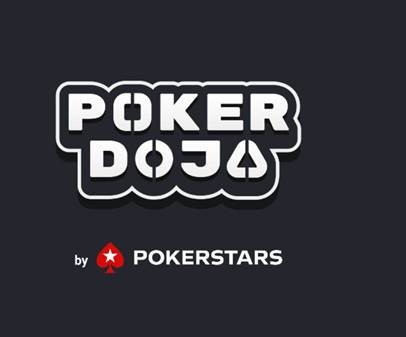
PokerStars released an interesting new mobile app today for iOS and Android called Poker DoJo. And even more interesting, it is actually for poker players in the United States (and the UK). Poker DoJo is a poker training app targeted to novice players. It focuses on understanding hand strength using three mini-games.
Aside from the clever design of the mini-games, one aspect of the app that kept my attention, even though I am not a beginner and therefore not really the intended audience, is that it feels like a mobile game and not just a learning app. All three games have point systems and allow you to check leaderboards and your own score history on a daily, weekly, or monthly basis. There is also a leveling system like we see in most mobile games. Advancing through the levels opens up challenges to tackle.
The games are actually pretty fun, even though they are just teaching basic poker hand reading.
Poker Grid
The Poker Grid mini-game is a test of reading hand rankings. Cards are laid out in a 5×5 grid and your job is to use your finger to trace a path through five cards and form a poker hand. Obviously, any five cards can make a hand, but the goal here is to create the strongest hands possible to achieve high scores. A high card hand does not count, only pair and above.
It’s not as easy as it seems. You have two minutes to score as many points as possible; used cards disappear and new ones fall into the grid. It’s kind of like doing a word search speed run. There’s a balance between trying to find the top hands like straight flush and four of a kind and just completing hands to earn whatever points you can.
Once per game, you can “burn” five cards, getting rid of them for new ones, and “shuffle” the grid to rearrange all 25 cards.
At the end, there is a 15-second bonus round in which you try to find the hand in the grid that is better than a full house.
All-in or Fold
All-in or Fold is a clever game and effectively simulates a short-stack situation in a tournament. You are given two hole cards, as you would in a poker game, and presented with the board in any state, from pre-flop to river. You then decide whether you want to go all-in or fold. If you go all-in, the hand plays out against a computer player. Win and you move on to the next hand, lose and it’s over.
What makes All-in or Fold interesting are two things: a) you can fold as many times as you want with no penalty – you are just dealt a new hand, and b) you have 20 seconds to make an all-in move.
Add those together and each round turns into a frantic fold, fold, fold, trying to find a hand with which to commit. At the end of 20 seconds, you are automatically put all-in. It does feel like you are short-stacked in a tourney, waiting for the right hole cards. The goal is to just try to win as many hands in a row as possible. Keep in mind that even if you make a good decision and shove with a strong hand, you could still get unlucky and lose.
Strongest Hand
Strongest hand teaches the concept of equity. There are ten rounds, consisting of your decision and the result. Each round can vary in the type of decision you must make.
In some rounds, you are shown three pairs of hole cards with the community cards at any possible point in a hand. Your job is to select which hand has the most equity. Most of the time, it’s fairly straight forward, though there is a time 20-second time limit.
I did run into a couple hands that were tricky. For instance, one hand had a pair with the flop dealt and one hand had a flush draw with one overcard. It was close (40-something to 40-something), but the drawing hand was deemed stronger.
In other rounds, you are shown your own hole cards and are up against one or two other unknown hands. Again, the board can be anything, from pre-flop to river. You pick if you think your hand is “weak,” “good,” or “strong,” which correspond to equity percentages. One hand that was odd was when I had J-Q heads-up pre-flop and said it was “good,” which was correct. The opponent ended up with K-K, but I won the hand with a straight. The app said my winning was the “expected” result, which I can’t imagine is true.
After ten rounds, there is a 30-second bonus round in which you try to get as many scenarios right as possible.
Overall, I’d say PokerStars’ Poker DoJo is worth a look, even for experienced players. You won’t learn anything new, but it’s fun to try to tally up as high of a score as you can, especially in All-in or Fold and Poker Grid. Not many people have played it yet, so I’m actually in first place on at least one leaderboard for today.























